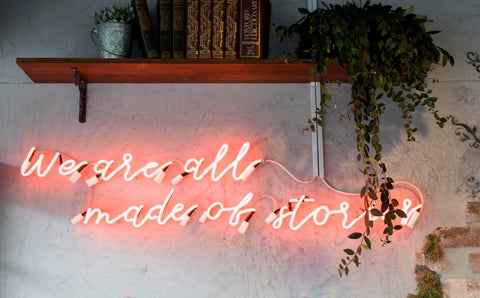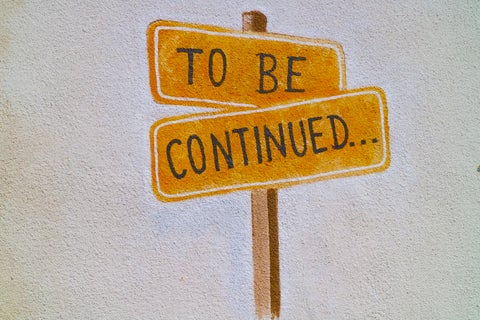How To Tell Your CPG Brand Story
People love a good story. We’ve been consuming them in one form or another since birth. Stories resonate with us, they engage our emotions and they stick in the memory. This is why you need to weave CPG storytelling into your branding.
The importance of CPG storytelling
There’s no getting away from it. The CPG market is pretty saturated. Consumers can take their pick from dozens of brands all offering the same type of product.
So what can you do — particularly as a smaller, indie brand — to make your products stand out in a crowded market?
CPG storytelling is an important part of the puzzle. A great brand story will attract customers and make them more loyal too.
Research shows that customers who see a brand story are more likely to think positively about a brand and to pay more for their products. Just think of great storytelling brands like Apple, Disney and Coca-Cola. These large corporations have created brand stories that transcend the products and services they offer.
They’ve successfully developed an emotional connection — a connection that encourages consumers to buy in order to feel part of the story.
CPG storytelling makes brands, buildings their brand equity, and makes their products more appealing to customers.

A few CPG storytelling basics
Where do you tell your story?
How will you get your brand story out to your audience? You might like to:
Include an Our Story page on your website, where you can display your CPG brand story in detail
Include a short but sweet version of your brand story on CPG product packaging, there’s research to show that it makes consumers feel more connected to your brand!
Include a QR code on your packaging that links to your website’s Our Story page.
Weave your CPG brand story into the copy and design of publicity, ads, and content — reinforcing your brand story across the board will help it stick in the minds of consumers
What should every CPG brand story convey?
Authenticity
Everyone’s entitled to a little creative license. But you can’t completely fake your brand story, like Hollister did back in 2000.
That’s because audiences value stories that are real and authentic. And because eagle-eyed consumers will be quick to point out any aspects of your story that don’t ring true.
In these days of social media amplification, you simply won’t get away with a right-out lie. And if consumers are doubting the authenticity of your brand story, they may begin to doubt your products too.
That’s why — bar a little embellishment here and there — you should stay true to the history and values of your brand when you’re crafting a brand story.
Company and customer values
Imagine you’re talking about the early days of your brand. Are you going to highlight the hard work that got your CPG off the ground? Or perhaps the innovation? Or the community support?
There are lots of different ways to tell the same story. Make sure your version syncs with both brand and customer values.
To do this, you need to know what your customer base cares most about, so some thorough consumer research is needed.
Emotion
Stories are powerful because they take us beyond the factual and the logical. We connect with them on an emotional level.
So your CPG brand story should include an emotional hook — like people, relationships, real life experience, the ups and downs of a journey or a good cause.
How to tell the story of your CPG brand
Create a narrative arc
Every great story involves conflict and resolution. We’re not saying that you have to turn your brand story into a Lord of the Rings epic. But that even a short and simple brand story can involve these key narrative elements.
The simplest way to do this is to answer the question: why does your company exist?
Chances are you created your company to address a consumer problem. Perhaps existing products in your niche weren’t environmentally friendly. Or they lacked quality. Or the brands behind them failed to give something back to society.
That consumer problem = your narrative conflict.
So describe the setting prior to the birth of your brand. Next, describe the conflict. And then talk about how your brand rides to the rescue with a resolution in the form of your product.
Just don’t give your story an ending. You want to give the impression that your brand story has really only just begun.

Share your company history and progress
Started out in your mom’s basement? And now you’ve finally opened your first factory? Tell your customers all about it.
People love to see a journey. It makes your brand so much more relatable when consumers get to see humble beginnings alongside current success.
You know what else makes a person relatable? Failure. Talking about a setback is a great way to get consumers on side, particularly if it led you to learn something valuable that ultimately benefitted your business.
Present your history as a visually appealing timeline and you’ll show customers just how far you’ve come on your CPG journey.
Highlight key characters
Another important element of CPG storytelling? Compelling characters.
We love to see the real person (or people) behind a brand, which makes total sense. It’s much easier to connect with a fellow human being than with a cold and distant company.
Go behind the scenes. Include a few inspirational quotes from owners, detailing what drives them to do what they do.
You may also like to present a supporting cast. People who helped the owner on their start-up journey. Or those who are currently working to supply ingredients, develop new products or make community connections.
Deep dive into your products
Each of your products has a story too — one that consumers are increasingly interested to hear about.
You might like to present a CPG product timeline showing each stage of production, from raw ingredients until your product reaches your customers.
This is another opportunity to highlight your brand values and your USPs. Tell customers about the quality of your raw ingredients or the sustainability of your supply chain or the health benefits of the end product.
Talk about the world beyond your brand
Whilst CPG storytelling means bigging up your brand, your products and your team, try not to be too inwardly focused. Lots of CPG brands are looking beyond the company for their storytelling content.
Take a look at the Kellogg’s website, for example. In the Our Story section, the brand talks about its founders and timeline. But it also roots the brand story in the present by talking about what they’re doing to give back to society.
People can read about the environmental, health and community endeavours Kellogg’s is currently involved in. Inevitably, these are stories full of characters, emotion and narrative, which make them really resonate with a consumer.
So follow suit. If you’re involved in any community or charity projects, include them as part of your CPG brand story. There’s no better way to convey your brand values and connect with your customers.

To bring this story to a close
Every CPG needs a brand story. The best CPG storytelling involves great characters, an exciting journey and lots of emotion. A brand story should be authentic, encompassing company values and brand personality. Do it right and you’ll inspire customers to join your tribe and buy your products.
Want to get more inspiration for your CPG brand? Take a look at the Buffalo Market blog for the latest industry insight.


